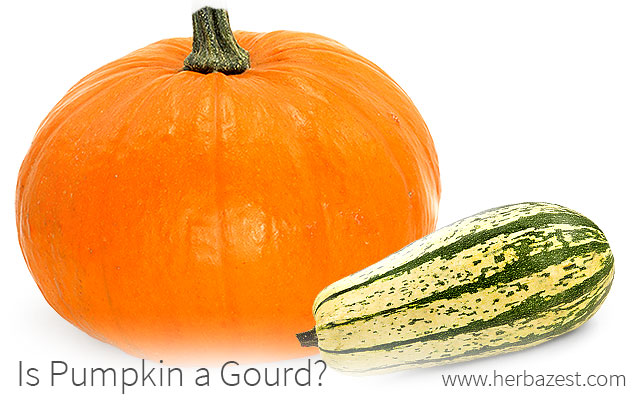Pumpkins represent a diverse set of crawling annual plants from the Cucurbitaceae family, used for a number of culinary, decorative, medicinal, and competitive purposes. Yet, for all of its wonderful redeeming qualities, inquiring minds still want to know, is a pumpkin a gourd, a squash, or some other kind of plant? Indeed, their plant classification can be quite difficult to comprehend - especially considering the perplexing language commonly used to describe them.
Characteristics of Gourds and Pumpkins
Pumpkins and gourds all belong to the enormous Cucurbitaceae family, which encompasses nearly 1,000 species. Some pumpkin varieties of the Cucurbita genus are also referred to as squashes or gourds, depending on their genetic makeup and plant characteristics.
In laymen's terms, the word pumpkin generally designates an orange squash that is edible and round, while gourds are usually smaller and produce hard-skinned, bitter fruits that are not palatable. However, like others in the Cucurbitacae family, gourds have been known to come in many combinations of shapes, colors, and sizes as a result of both manmade and naturally-occurring changes.
Gourds are cultivated primarily for decoration, household objects, and other common purposes. Large, colorful turban gourds, small hand-held ornamental gourds, and hardshell bottle gourds are all common examples.
Harvesting time for gourds can be significantly longer than other related species, sometimes up to 150 days. Thus, in regions of short or average-length summers, it may be advisable to start these plants indoors.
Characteristics of Pumpkin Gourds
While trained botanists study the appearance and characteristics of a pumpkin's fruit and related parts, its function and edibility will usually help the layperson to determine if a pumpkin is a gourd or not.
As with other gourds, the pumpkin gourd, also known as the 'Autumn Wings' gourd, produces a hard exocarp. It is a cultivar of the Cucurbita pepo species. A vibrantly-colored yellow, green, or orange fruit, 'Autumn Wings' is pear-shaped at its base and has a long, slender, curving neck. It may produce fruits with multiple colors or speckled stripes. Additionally, some miniature pumpkin varieties, used for arts and crafts, are also considered pumpkin gourds.
How to Use Pumpkins and Gourds
Traditionally, some gourds, with their bitter flesh, have been used for medicine and as bait for catching fish. More commonly, though, ornamental gourds serve as attractive autumn decorations, filling harvest baskets and complementing table centerpieces. The pumpkin gourd generally finds its niche in this category of gourds.
Meanwhile, the durable rinds of bottle and dipper gourds make sturdy materials for crafting musical instruments, ladles, planters, holding containers, jugs, ceremonial masks, birdhouses, and smoking pipes.
Though most gourds are not edible because of their bitter taste, some of them are less commonly used for culinary purposes, such as the deep orange 'turban gourd', which is scooped out like a squash, stuffed with yummy ingredients, and heavily seasoned for flavor before roasting.
The origins and genetic background of gourds and pumpkins are so tightly intertwined that discussing one without mentioning the other seems nearly impossible. While in some cases (depending on its shape and palatability), it can be considered a gourd, pumpkin is a very complicated plant that often wears multiple hats at once. Indeed, there is still much to be discovered about these unusual fruits, but untangling the mystery is only part of what makes the experience so worthwhile.
Sources
- Missouri Botanical Garden, Gardening Help FAQs, Horticulture Questions and Answers
- University of California, Cooperative Extension, Vegetable Research & Information Center, 2014 | Cucurbitaceae – Fruits for peons, pilgrims, and pharaohs
- University of Illinois, Extension, Pumpkins and More
- Horticultural Reviews, History of the Cultivar-Groups of Cucurbita pepo, 2010




